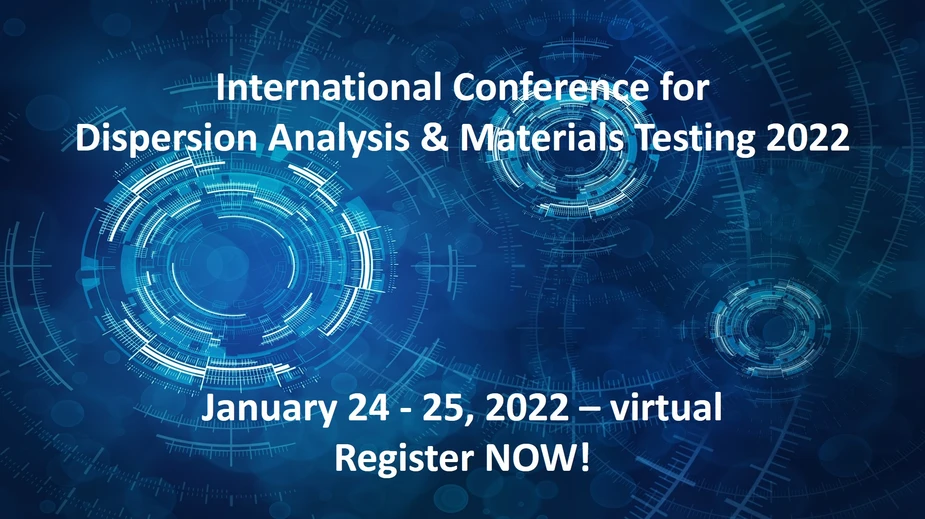Learn from nature, use resources more effectively and avoid harmful effects
5 trendsetters nominated for the LUM Science Award YSA 2022
From January 24th to 25th, 2022, LUM GmbH will host the 10th International Conference for Dispersion Analysis and Materials Testing.
Prof. Dr. Dr. Lerche, chairman of the scientific committee and LUM managing director: “We have been promoting the Young Scientist Award (YSA) for outstanding scientific achievements in the fields of particle and dispersion characterization and materials testing since 2014 and awarding it at the conference according to defined quality criteria. The COVID-19-related rescheduling of the face-to-face event to a virtual appointment in January takes place with a laughing and a crying eye. We are pleased to bring scientifically exciting and current topics from a dozen qualified applications from all parts of the world to an exchange with the conference participants through the nominated candidates. Due to the first-time and hopefully unique virtual character of the event, the valuable background and break discussions will run differently than with approved live conferences. Nonetheless, this time, too, the focus is on interdisciplinary exchange and networking. "
Five candidates from South America and Europe are nominated in 2022 and are expected to attend the virtual conference with their interesting results upon invitation:
- Lia Beraldo da Silveira Balestrin, Institute of Chemistry – University of Campinas, Brazil, used the analytical photocentrifuge LUMiSizer to test inhibitors in the precipitation of asphaltenes in dead oils. The scientist evaluated the effect of increasing the concentration of a flocculant (n-heptane) on phase separation, indicating that the possibility of monitoring sedimentation and asphaltenes flocculation. The profiles also indicated that the sample is polydisperse and that flocculation becomes more important as the concentration of n-heptane increases. LUMiSizer allows assessing the performance of time-dependent experiments directly in unstable crude oils and adds information for inhibitor selection, previously neglected by the traditional methodologies.
- In molluscs, such as mussels, catechols play an essential role in adhesion under harsh marine conditions. Catechols linked to polymers are not only able to enable strong adhesion to substrate surfaces, they additionally provide cohesion through bonding with other catechols. Thus, mussel-inspired catechol-containing polymers provide a promising basis for developing strong biogenic adhesives. Charlotte Capitain devoted herself to the subject at University of Kaiserslautern, Institute of Bioprocess Engineering, and at University of Applied Sciences Aachen, Bioprocess Engineering, Jülich, Germany.
- David Hespeler, Freie Universität Berlin, Institute of Pharmacy, Germany, investigated pharmaceutical suspensions with modified porous silica particles. Due to the large particle size of 50 μm and more, undesirable sedimentation and thus incorrect medication can occur. The LUMiSizer® was able to predict the long-term stability of the examined suspension formulations and differentiate used gelling agents in their stabilizing ability. Based on the data presented, this analytical principle also appears to be suitable as a pharmacopoeia method for the rapid prediction of physical suspension stability.
- Additive manufacturing technologies allow for achieving the objectives of lightweight designs with increased integrated functionality. They have the potential of reducing materials waste and allow for a flexible geometric design. Inga Meyenborg, Fraunhofer IFAM Bremen, University of Bremen, investigated whether the LUMiFrac centrifuge, which is usually used to determine the strength of adhesive bonds, can be utilized for testing tensile and fatigue properties of AlSi7Mg0.6 specimens manufactured with the additive manufacturing technology Laser Beam Melting.
- Ana Beatriz Dilena Spadoni, São Paulo State University, Brazil, dealt with the interactions of formulation components and the stability in spray mixtures of fungicides and auxiliaries with insecticides. Mixing more than one agrochemical in the same tank is a common strategy to control different target pests and diseases simultaneously, reducing spraying times and hence operating costs. Mixtures of formulated products can change solution characteristics due to physical-chemical reactions and interactions between products, decreasing their efficiency. Such physical-chemical changes may impair the expected phytosanitary control and also poison crops. By means of analytical photocentrifugation (LUMiSizer measuring device), the separation stability in the mixed products was successfully used for optimization purposes.
Registration and details for the conference: conference2022.lum-gmbh.com/conference-2022-561.html
LUM Young Scientist Awards 2014-2022, a review and an outlook: www.youtube.com/watch
Abstracts for the conference: www.dispersion-letters.com
Press contact:
LUM GmbH
Justus-von-Liebig-Straße 3, 12489 Berlin
Phone +49 30 6780-6030
Email support(at)lum-gmbh.de
www.lum-gmbh.com
Press release LUM GmbH, 14 December 2021
